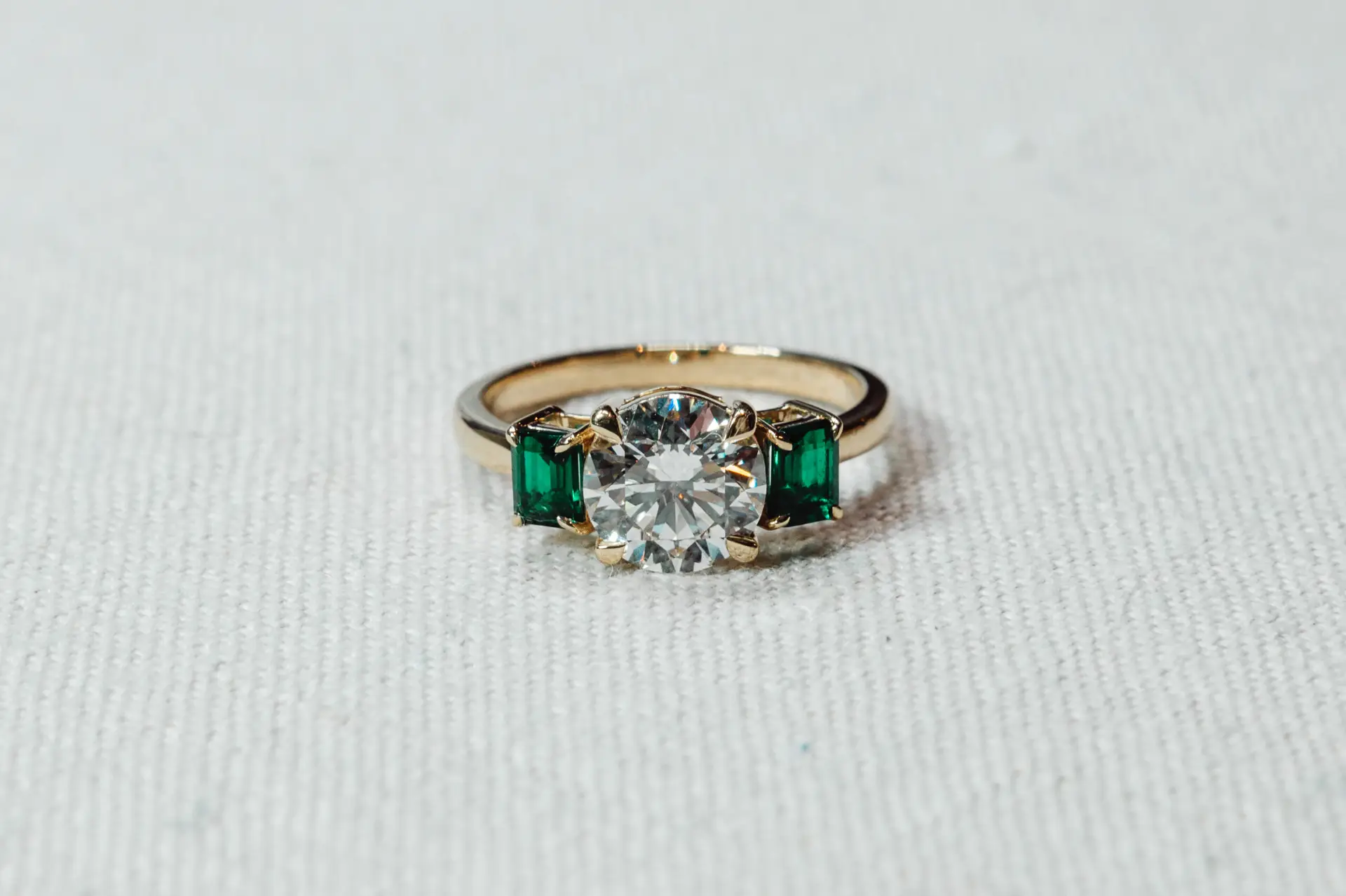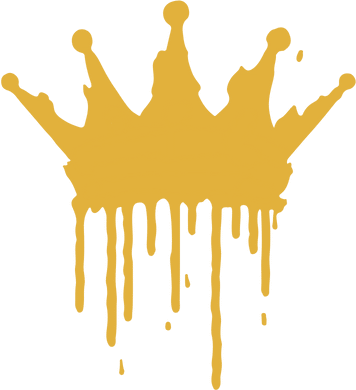 #
#
The brilliant cut isn’t just the most popular diamond style – it’s the result of centuries of mathematical refinement, all in service of one goal: maximum sparkle. Designed to enhance brilliance, fire, and scintillation, the round brilliant cut has become the gold standard in modern diamond cutting.
This guide breaks down what makes brilliant-cut diamonds so special – from their history and anatomy to the optical physics behind the glow.
1. What Is a Brilliant Cut Diamond? #
A brilliant cut refers to a faceting style specifically engineered to optimize how a diamond reflects and refracts light. The most iconic version is the round brilliant, which features 57 or 58 facets arranged to create intense sparkle.
These three visual effects define a brilliant cut:
- Brilliance – The return of white light.
- Fire – The dispersion of light into rainbow flashes.
- Scintillation – The sparkle you see as the diamond moves.
The round brilliant is the most studied shape in the world – and for good reason. It’s a masterclass in geometry and light performance.
 #
#
2. A Sparkling History #
The brilliant cut didn’t emerge overnight. It evolved through innovation, artistry, and mathematical discovery:
- 1400s: Early cuts featured a few flat surfaces to enhance shine.
- 1600s: The Mazarin cut added more facets and symmetry.
- 1700s: The Old Mine cut introduced the cushion shape, a predecessor to the modern brilliant.
- 1919: Mathematician Marcel Tolkowsky published the ideal angles for light return, giving birth to the modern round brilliant, still the industry’s benchmark today.
3. Anatomy of Sparkle #
A brilliant cut diamond’s firepower lies in its precision. Key parts include:
- Table – The flat top surface.
- Crown – The upper part above the girdle.
- Girdle – The thin middle edge.
- Pavilion – The lower half that reflects light back up.
- Culet – A tiny point or facet at the bottom (often left out).
The full 58-facet structure features a complex arrangement of table, star, bezel, girdle, and pavilion facets, all carefully calculated to bounce light just right.
4. How Light Behaves Inside a Brilliant Cut Diamond #
The magic of sparkle is rooted in physics. When light enters a well-cut diamond:
- Refraction bends it inward.
- Total Internal Reflection (TIR) keeps it bouncing inside the pavilion.
- Dispersion splits it into rainbow colors (fire).
- Light Return directs it upward through the crown and table.
- Scintillation happens when the diamond or light source moves.
Analogy: Think of it like a pinball machine. The light bounces off precisely angled bumpers (facets), maximizing brilliance. If the angles are off, the light escapes, and the sparkle fades.
5. Ideal Proportions: Cut Is King #
Cut quality is the most significant factor in a diamond’s beauty. Even a flawless, colorless diamond can look dull if it’s cut poorly.
Gabrielle’s Ideal Proportions for Round Brilliant Cuts: #
- Table Size: 56-57%
- Depth: 59% – 62.5%
- Crown Angle: 34.0° – 35.0°
- Pavilion Angle: 40.6° – 41°
- Girdle: Slightly thin to slightly thick
- Culet: None or very small
Analogy: Like a satellite dish, a perfectly angled diamond reflects signals (light) right where they need to go. Off by a few degrees? You lose reception (sparkle!)
6. Understanding Cut Grades #
Gem labs like the GIA assign cut grades based on how well a diamond handles light:
- Excellent: Maximum brilliance and fire
- Very Good: Slight leakage, still beautiful
- Good: Noticeable leakage
- Fair/Poor: Dull, with light escaping from the bottom or sides
Analogy: Let’s think about diamonds as an instrument that we need to tune just right to get the most out of it. Even the most experienced musician can struggle with a poorly tuned instrument. In diamond terms, an ideal/excellent cut is finely tuned – crisp, bright, resonant. A poor cut sounds off-key. (Remember – we want to focus on the numbers, not the cut grade from the report… even an ideal/excellent graded diamond can be off in its proportions)
7. Brilliant Cut Variations #
Not all brilliant cuts are round. Other shapes use the same faceting style to achieve similar sparkle:
- Princess Cut – Square with brilliant-style faceting
- Oval Cut – Elongated round
- Marquise Cut – Pointed ends, eye-shaped
- Pear Cut – Teardrop
- Heart Cut – Heart-shaped variation
Each brings its own character to the brilliance party.
8. Choosing a Brilliant Cut Diamond #
When buying, prioritize what truly impacts appearance:
- Cut – Always comes first. It determines sparkle.
- Carat – Bigger costs more, but size doesn’t equal beauty.
- Color – D-F are colorless; G-J may show warmth.
- Clarity – Choose “eye-clean” over perfect.
- Fluorescence – Can affect appearance under UV and can sometimes cause a blue-ish tint to a colorless diamond. When choosing a colored diamond, we prefer a bit of fluorescence to achieve a more saturated appearance.
Pro Tip: A well-cut 0.90 ct can outshine a poorly cut 1.00 ct. Size is nothing without sparkle.
9. Brilliant Cut vs. Other Cuts #
#
Why go brilliant? #
- Sparkle Maximized – You get the most fire and flash.
- Classic Appeal – Timeless, versatile, and universally flattering.
- Forgiving on Color & Clarity – Great light performance can mask lower grades.
10. Final Thoughts #
The brilliant cut diamond is more than a shape – it’s an achievement in optical engineering. With a well-cut stone, you don’t just wear a diamond. You wear a light show.
Choose wisely, and let your sparkle do the talking.
#


